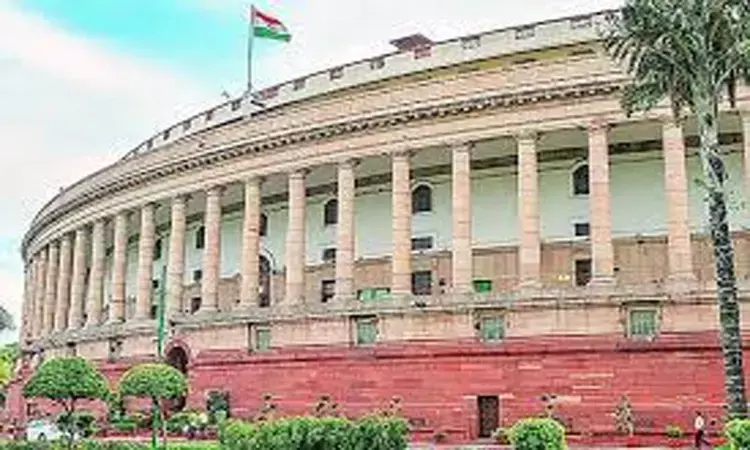- Home
- Medical news & Guidelines
- Anesthesiology
- Cardiology and CTVS
- Critical Care
- Dentistry
- Dermatology
- Diabetes and Endocrinology
- ENT
- Gastroenterology
- Medicine
- Nephrology
- Neurology
- Obstretics-Gynaecology
- Oncology
- Ophthalmology
- Orthopaedics
- Pediatrics-Neonatology
- Psychiatry
- Pulmonology
- Radiology
- Surgery
- Urology
- Laboratory Medicine
- Diet
- Nursing
- Paramedical
- Physiotherapy
- Health news
- Fact Check
- Bone Health Fact Check
- Brain Health Fact Check
- Cancer Related Fact Check
- Child Care Fact Check
- Dental and oral health fact check
- Diabetes and metabolic health fact check
- Diet and Nutrition Fact Check
- Eye and ENT Care Fact Check
- Fitness fact check
- Gut health fact check
- Heart health fact check
- Kidney health fact check
- Medical education fact check
- Men's health fact check
- Respiratory fact check
- Skin and hair care fact check
- Vaccine and Immunization fact check
- Women's health fact check
- AYUSH
- State News
- Andaman and Nicobar Islands
- Andhra Pradesh
- Arunachal Pradesh
- Assam
- Bihar
- Chandigarh
- Chattisgarh
- Dadra and Nagar Haveli
- Daman and Diu
- Delhi
- Goa
- Gujarat
- Haryana
- Himachal Pradesh
- Jammu & Kashmir
- Jharkhand
- Karnataka
- Kerala
- Ladakh
- Lakshadweep
- Madhya Pradesh
- Maharashtra
- Manipur
- Meghalaya
- Mizoram
- Nagaland
- Odisha
- Puducherry
- Punjab
- Rajasthan
- Sikkim
- Tamil Nadu
- Telangana
- Tripura
- Uttar Pradesh
- Uttrakhand
- West Bengal
- Medical Education
- Industry
Integrated Health Information Platform adopted by 36 States/UTs for disease surveillance, informs Union Minister Baghel

New Delhi: In an attempt to modernize and improve the disease surveillance infrastructure in the country, the Integrated Disease Surveillance Programme (IDSP) has shifted from paper-based weekly reporting to paperless reporting through the Integrated Health Information Platform (IHIP).
The Ministry of Health and Family Welfare launched the portal of the Integrated Health Information Platform (IHIP) on 05th April 2021.
Prof Satya Pal Singh Baghel, Minister of State for Health and Family Welfare, in a written reply in Rajya Sabha, stated, "IHIP is an information platform that integrates data from various "registries” to provide near real-time information on health surveillance from all across India for decision-makers to take appropriate public health action. It is designed to capture case-based data of more than 33 plus health conditions along with special surveillance of ILI/SARI, COVID-19 and Monkey Pox.
It provides a single operating platform of public health surveillance of the individuals at District, State and National levels. At present, all the 36 States/UTs have completely migrated to IHIP portal."
The minister was responding to a question by Shri S Niranjan Reddy about whether the Government proposes to modernize and improve the disease surveillance infrastructure. Giving the details of the existing disease surveillance infrastructure in the country, the minister pointed out the Integrated Disease Surveillance Programme (IDSP), which is a flagship programme at NCDC, MoHFW, mandated with surveillance and response to outbreak-prone communicable diseases.
The Integrated Disease Surveillance Programme (IDSP), a flagship initiative at the National Centre for Disease Control (NCDC) under the Ministry of Health and Family Welfare (MoHFW), was established in 2004 with a primary focus on surveillance and response to outbreak-prone communicable diseases. Its key objectives include strengthening a decentralized laboratory-based IT-enabled disease surveillance system for epidemic-prone diseases, monitoring disease trends, and facilitating the early detection and response to outbreaks. The program aims to create a trained cadre of Rapid Response Teams (RRTs) at the District, State, and National levels.
The organizational structure includes a Central Surveillance Unit (CSU) at the central level, a State Surveillance Unit (SSU) at the State/UTs level, and a District Surveillance Unit (DSU) at the district level. In the event of an outbreak-prone disease, rapid response teams are deployed at the district, state, and central levels for comprehensive outbreak investigations and timely response actions.
The surveillance tool consists of S (Syndromic) form filled by ANMs at the Sub-centre level, P (Presumptive) form filled by medical officers at health facility level and L (Laboratory confirmed) form filled by laboratories as per standard case definitions. Every State has designated laboratories like District Public Health Laboratories (DPHLs), State Referral Laboratories (SRLs) under IDSP for investigation and surveillance of these diseases. Moreover, the government has approved to set up Metropolitan Surveillance Units in 20 metropolitan cities (10 tier 1 and 10 tier 2 cities) in India.
Integrated Disease Surveillance ProgrammeIDSPNational Centre for Disease ControlNCDCMinistry of Health and Family WelfareMoHFWrajya sabha
Source : with inputsSanchari Chattopadhyay has pursued her M.A in English and Culture Studies from the University of Burdwan, West Bengal. She likes observing cultural specificities and exploring new places.
Next Story


